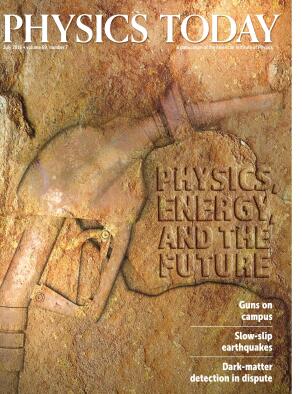The linear no-threshold theory: Readers weigh in
DOI: 10.1063/PT.3.3212
We write to correct inaccuracies in “Low-dose radiation exposure should not be feared,”
The 2006 report Health Risks from Exposure to Low Levels of Ionizing Radiation: BEIR VII Phase 2 from the National Academy of Sciences was based on studies of atomic-bomb survivors from Hiroshima and Nagasaki; it concluded that “the balance of scientific evidence at low doses tends to weigh in favor of a simple proportionate relationship between radiation dose and cancer risk.” 1
The dose response for most cancer sites in atomic-bomb survivors is well described linearly, without a threshold. Breast cancer data are most consistent with linearity. 2 When all solid cancers are analyzed together, there is no evidence of departure from the LNT scenario.
A 20-year study that followed 110 645 workers who helped clean up after the 1986 Chernobyl accident in the former Soviet territory of Ukraine shows statistically significant risks for all leukemia and for chronic lymphocytic leukemia. 3 Those data show a significant linear dose response for all leukemia.
A cohort study of 308 297 workers in the nuclear industry cites, as a principal finding, “evidence of a linear increase in the excess relative rate of cancer mortality with increasing exposure to ionizing radiation at the low dose rates typically encountered in the nuclear industries in France, the UK, and the USA.” 4
The National Council on Radiation Protection and Measurements, the United Nations Scientific Committee on the Effects of Atomic Radiation, the UK National Radiological Protection Board, and other authoritative bodies have assembled committees of experts to review the available scientific data on health effects of low-level ionizing radiation and issued reports analyzing the scientific literature in which the LNT and other theories have been used in estimating risk. 5 Those expert organizations have long adhered to the LNT model as the basis for their recommendations.
Numerous scientific studies support the LNT model, and there is simply no statistically valid science at present that warrants changing the model.
References
1. National Research Council, Committee to Assess Health Risks from Exposure to Low Levels of Ionizing Radiation, Health Risks from Exposure to Low Levels of Ionizing Radiation: BEIR VII Phase 2, National Academies Press (2006), p. 246.
2. M. P. Little et al., Radiology 251, 6 (2009). https://doi.org/10.1148/radiol.2511081686
3. L. B. Zablotska et al., Environ. Health Perspect. 121, 59 (2012). https://doi.org/10.1289/ehp.1204996
4. D. B. Richardson et al., BMJ 351, h5359 (2015). https://doi.org/10.1136/bmj.h5359
5. K. L. Mossman, Health Phys. 80, 263 (2001). https://doi.org/10.1097/00004032-200103000-00009
More about the Authors
Bemnet Alemayehu. (balemayehu@nrdc.org).
Thomas Cochran. Natural Resources Defense Council, Washington, DC.




